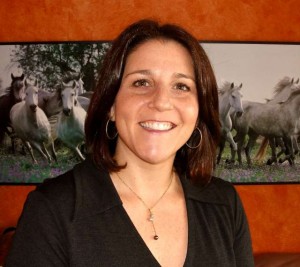Living Green
Going Green in Spring!
By Jathynia Garcia
It’s almost Spring, and most of us start thinking of all that accumulated clutter – like toys, shoes, knick knacks and other items. This is sometimes a challenge, but it’s a good time to start programming your Spring Cleaning for 2012.
So thanks to earth911.com, we have some simple, easy changes and ideas that you can incorporate in your home and even your business.
1- Declutter your life.
We mean get rid of all of that stuff…that is everything you don’t want or use on a regular basis. While “spring clean” may not be a new turn of phrase, the task is no doubt daunting. What do you toss? What  should you donate? What can be reused? And, finally, what can you recycle?
should you donate? What can be reused? And, finally, what can you recycle?
Keep It: A good rule of thumb to remember is if you have used it in the past year, chances are you’ll use it again. We’re always advocates for hanging on to the “essentials,” i.e. your flavorful wrought-iron skillet, the wicker basket in the corner that’s great for storage or your fave book that’s perfect on a rainy afternoon.
But while spring may mean a fresh start, it doesn’t have to mean new stuff. If it’s not broken, why replace it?
Donate It: Taking an inventory of your belongings shows you that tastes change and upgrades happen. But we all have those what-was-I-thinking? items as well. Even though these things are disposable to you, they may have many useful miles left. Keep items out of overcrowded landfills by asking family and friends if they have use for any of your unwanted items. Or consider Goodwill or Faith Farm or another good organization for donations.
Recycle It: Commercial mail, old magazines, unread books – all of these common clutter items can be recycled. Consider this: A family of four uses 1.25 tons of paper per year on average, and the U.S. EPA reports that recycling 1 ton of paper saves 3.3 cubic yards of landfill space, as well as enough energy to power the average American home for six months.
Trash It: Landfills should be used for items that truly have no other useful purpose. Be cautious when disposing of hazardous materials, as inappropriate distribution can cause toxic components to leach into the soil and groundwater. But even if something isn’t recyclable, chances are it may be reused in some creative capacity.
2. Spring clean the natural way.
Now that you’ve cleared the clutter and can actually see those countertops and hardwood floors, you still have to scrub off the grit and grime from the winter (ick!).
But harsh fumes from some traditional cleaners may do more harm than good: They can be responsible for around 10 percent of toxic exposures reported to poison control centers and are difficult to dispose of properly.
You can most likely find “green” or “natural” cleaning products at your grocery store. But you can save some money and make your own cleaning product from supplies you already have.
For spray cleaner: Combine and store in a spray bottle 2 cups water; 1/4 cup white vinegar; 1/4 tsp. tea tree oil; 1/4 tsp. lavender oil.
For deodorizing cleaning: Mix one part vinegar and one part water in a spray bottle to clean countertops, floors, stovetops and other appliances. Scrub dishes, surfaces and stains with a lemon that has been cut in half and sprinkled with baking soda on the flat side
Keep in mind that homemade cleaners may not completely eliminate all bacteria, such as the H1N1 virus. Be sure you read your product’s label and follow the instructions as directed.
3. Go for an energy upgrade.
 For most of us, going off the grid may not be in the budget (unless you got a huge tax refund that is). But if you’re looking for mucho savings on your electric bill, here are three super-easy changes you can make…
For most of us, going off the grid may not be in the budget (unless you got a huge tax refund that is). But if you’re looking for mucho savings on your electric bill, here are three super-easy changes you can make…
While fans may not be a substitute for AC in sweltering temps, they can allow you to set your thermostat a couple degrees higher.
Replace incandescent light bulbs with efficient CFLs or LEDs.
Americans spend 20 percent of their electricity budget on lighting alone. Energy-efficient lighting can save the average household more than 1,000 kilowatt hours of electricity, 1,600 pounds of carbon dioxide and (get ready for this one) up to $110 per year in electricity costs.
Install a programmable thermostat that automatically adjusts your home’s temp.
If the initial cost of a programmable thermostat (about $115) deters you, keep in mind that it can reduce your energy usage by more than 15 percent in the summer and up to 25 percent in the winter.
For those of you that need hard numbers, that’s up to $250 in heating and cooling costs every year you use it and $2,500 over the course of 10 years.
Shade your windows.
It sounds simple enough, but when you consider the huge difference it makes, you’ll wonder why you still have naked windows. While the sunlight is refreshing in the summer, using light colored blinds and drapes – which reflect light instead of absorbing it – can save you up to $210 per year on heating and cooling costs.
4. Wash your dirty car.
While you may think you’re doing your car (and your wallet) a favor by hand-washing it at home, it’s actually the opposite.
According to the International Car Wash Association, automatic car washes use less than half the water used when washing your car at home. The average home wash uses 80-140 gallons of water while the commercial average is 45 gallons.
Commercial car washes often reuse water and send the runoff to treatment centers instead of nearby lakes and streams. They also use high-pressure nozzles that require less water usage.
But if you’re dead-set on washing your car at home with the kids, here’s how to keep the impact at a minimum:
· Park on gravel or grass so soapy water soaks into the ground, becomes filtered and recharges groundwater.
· Avoid soaps with labels that say “harmful, danger or poison.”
· Turn off the hose when you’re not using the water. During a 15-minute car wash, you could use 150 gallons of water if there isn’t an automatic shut-off nozzle.
5. No more excuses, start your compost!
We promise it’s easier than you think. For households, composting is a way to recycle certain materials and kitchen scraps and turn them into a beneficial soil amendment for home gardens and reduce waste output.
Note: Composting is one of the most satisfying types of recycling based on the fact that, unlike that plastic bottles you send to the recycling plant, you can watch this recycling process every step of the way. In addition, the waste reduction impact can be huge.
In fact, the U.S. EPA estimates that each American throws away an average of 1.3 pounds of food scraps daily. The combination of this food waste, along with yard trimmings, makes up 24 percent of our nation’s municipal solid waste stream.
What can go into the compost: Food scraps, grass clippings, plant cuttings, dry leaves, hay and straw, simple paper products (newspaper, cardboard, etc.), crushed egg shells, coffee grounds, sawdust and wood clippings. (Whew! That’s a lot.)
In short, it’s a no-brainer that composting will drastically reduce your waste.
Besides the process itself, knowing what ingredients should go into a backyard composting operation is essential for a successful outcome.
6. Plant the garden you’ve always wanted.
Want the freshest, most affordable, organic vegetables possible with absolutely no food miles? Make like the Obamas and grow your own.
It may seem like a lot of work, but the outcome will yield more than just fresh produce. You can reduce environmental damaged caused by traditional farming methods using large tractors and toxic pesticides. Having a backyard garden also reduces fuel usage associated with transport.
But now we’ll get to the best part: You can save up to $800 per year! The key to starting your own garden is picking the right spot, the best crops for your area and learning to maintain a healthy ecosystem.
And we didn’t forget about you fellow urbanites. If your space is limited, consider jumping on the urban gardening bandwagon. Options include renting shared spaces, utilizing rooftop access and even growing items in your own kitchen.
7. Get your fitness on.
So, how’s that New Year’s resolution going anyway? As the four-month mark draws near, many of us have admittedly slacked off on the fitness adventures we embarked upon in January. Throw some spice back into your routine and get healthy for the environment’s sake. That’s right, we said it.
Studies show that physically active individuals pay, on average, about $1,500 a year in medical costs less than the costs of those who don’t exercise. Those prescriptions, medical exams and doctors visits all come with significant eco costs.
American hospitals generate approximately 6,600 tons of waste daily. As much as 85 percent of that is non-hazardous solid waste, such as paper, cardboard, food waste, metal, glass and plastics, according to Practice Green Health.
But instead of paying those hefty gym fees, find a jogging buddy, download yoga classes online or get out that bike again and commute to work.
8. Have a cookout.
Yep, we’re telling you to throw a party. Spring is all about getting outside and dusting off the grill and having a good ‘ol fashioned cookout.
Before diving into this one, we want to point out that we are not trying to step on any grillmaster’s toes. The debate between charcoal and propane is a tough one: Which one produces more flavor? Which is cheaper, faster? And most importantly, which is more eco-friendly?
We consulted a recent study by Environment Impact Assessment Review to answer this one. Drum roll, please…
According to the study, “The overwhelming factors are that as a fuel, LPG (liquefied petroleum gas) is dramatically more efficient than charcoal in its production and considerably more efficient in cooking.” The two grilling methods were defined by their overall footprint, with charcoal using 998 kg of CO2, almost three times more than propane, which weighed in at 349 kg.
ScienceDaily reports that as fuel, LPG is “dramatically more efficient than charcoal in its production.” When purchasing a propane tank, make sure there is a trade-in option. Most retailers will let you bring in an empty tank in exchange for a decent discount on your next tank.
For free plumbing tips & advice, feel free to email & we will send you our Top 10 Plumbing Tips.






 Mom
Mom
 Dog Walkin’ Wellington
Dog Walkin’ Wellington During the Middle Ages, it is said that only the nobility was allowed to possess purebred sighthounds. Since Lurchers were considered mutts, and to have no value, it was acceptable for the common man to possess such dogs, which were widely used to put food on the family table by poaching the estates of those who looked askance at them.
During the Middle Ages, it is said that only the nobility was allowed to possess purebred sighthounds. Since Lurchers were considered mutts, and to have no value, it was acceptable for the common man to possess such dogs, which were widely used to put food on the family table by poaching the estates of those who looked askance at them. Most of us would think that Lucy is a rather unique, and rare, breed, but Sarah has friends, and knows people, who also have Lurchers. She’s lived in the US for about 20 yrs, and says that “Most of the owners I know are European. In the British Isles, they are popular, and a popular cross is between a sight hound and a Bedlington Terrier. Once people are familiar with Lurchers, they really want one,” she says enthusiastically.
Most of us would think that Lucy is a rather unique, and rare, breed, but Sarah has friends, and knows people, who also have Lurchers. She’s lived in the US for about 20 yrs, and says that “Most of the owners I know are European. In the British Isles, they are popular, and a popular cross is between a sight hound and a Bedlington Terrier. Once people are familiar with Lurchers, they really want one,” she says enthusiastically.







 should you donate? What can be reused? And, finally, what can you recycle?
should you donate? What can be reused? And, finally, what can you recycle? For most of us, going off the grid may not be in the budget (unless you got a huge tax refund that is). But if you’re looking for mucho savings on your electric bill, here are three super-easy changes you can make…
For most of us, going off the grid may not be in the budget (unless you got a huge tax refund that is). But if you’re looking for mucho savings on your electric bill, here are three super-easy changes you can make…


 Teen Talk
Teen Talk
 As I Was Saying
As I Was Saying
 Health & Fitness
Health & Fitness